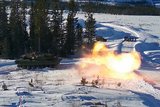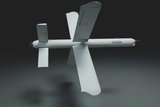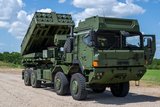Hypersonic threats force Pentagon to modernise its missile defence architecture
The NDAA for FY2024 has allocated nearly 2.5 billion to hypersonic-related programmes including the Glide Phase Interceptor. (Image source: Raytheon Missiles and Defense)
In order to face threats posed by Russian and Chinese hypersonic capabilities, the US military has been seeking ways to modernise its missile defence architecture. The Pentagon has been conducting several efforts in the area including updating policies, enhancing partnerships with allies and acquiring new sensors and systems.
‘The problem right now is the enemy is not going ballistic,’ Richard Ritter, program executive for sensors, command and control at the Missile Defense Agency, claimed during a recent webinar conducted by the US-based think tank CSIS. ‘They are rapidly going to manoeuvring and other types of weapons not just hypersonic’,
The National
Already have an account? Log in
Want to keep reading this article?
More from Land Warfare
-
![Rheinmetall and KNDS tank tie-up narrows trans-European options]()
Rheinmetall and KNDS tank tie-up narrows trans-European options
The French and German governments signed an agreement in June 2018 to cooperate on the development of a new main battle tank under the Main Ground Combat System programme but the effort has struggled. This new agreement may damage it further.
-
![2025 land market review: British Army woes, European heavy armour and US MBT progress]()
2025 land market review: British Army woes, European heavy armour and US MBT progress
The last year has seen several major procurements in the land market. Shephard’s Dr Peter Magill reviews the main trends and themes in land procurement of 2025.
-
![Hungary set to begin using Hero 400 loitering munitions]()
Hungary set to begin using Hero 400 loitering munitions
Developed by Israel's Uvision and with systems being sold in the thousands to multiple European NATO countries and the US, the Hero family of loitering systems is also in production in the US and Italy, the latter through Rheinmetall.
-
![Croatia orders Leopards and CAESAR howitzers as Lithuania orders more CAESARs]()
Croatia orders Leopards and CAESAR howitzers as Lithuania orders more CAESARs
The Leopard is becoming the tank of choice in central and eastern Europe as Croatia joins Lithuania, the Czech Republic and Hungary in ordering the platform. Lithuania and Croatia have also signed for CAESAR howitzers.
-
![Lockheed Martin to look further afield for GMARS rocket system opportunities]()
Lockheed Martin to look further afield for GMARS rocket system opportunities
The HX truck is already in use in many NATO and allied countries around the world as a logistics vehicle and carrier for high-value systems, including missile firing weapons, so its use for the Global Mobile Artillery Rocket System makes logistical sense.
























